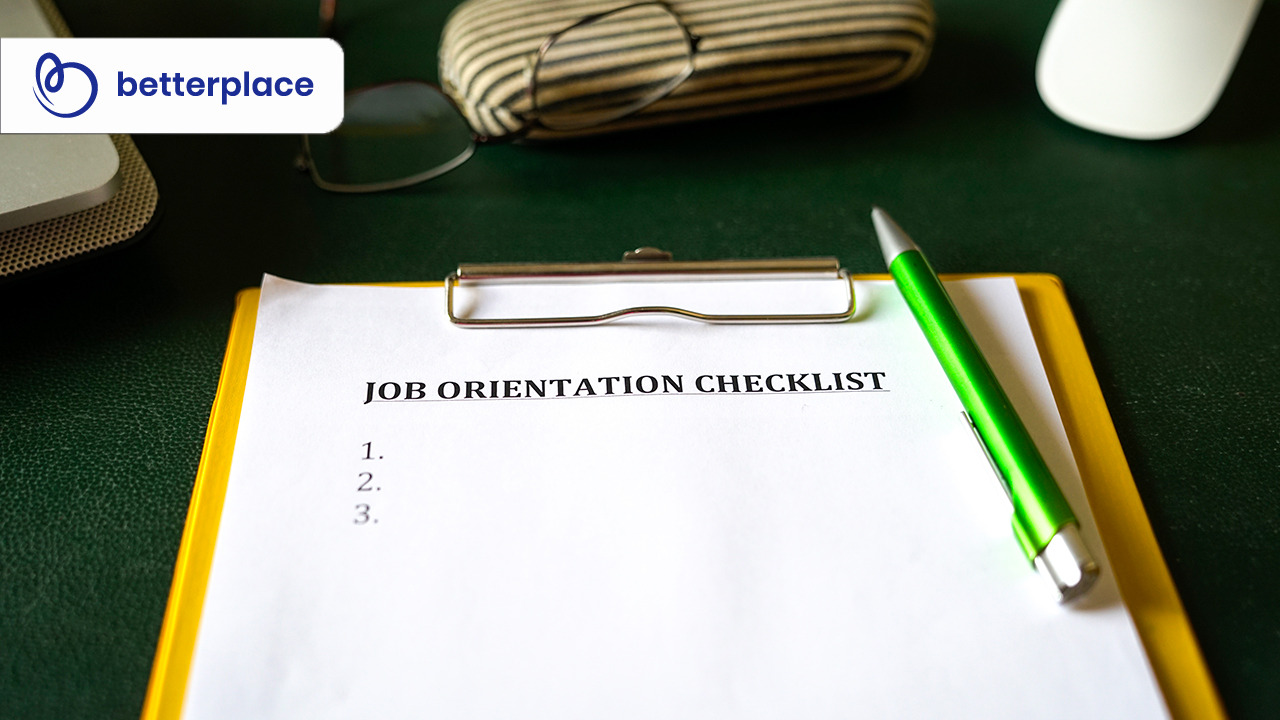12 Steps That Should Be On Your Onboarding Checklist in 2023
An onboarding checklist is important to ensure a smooth onboarding experience for new employees and employers. A proper onboarding procedure makes it easier for the HR team to enroll new employees and help them get started with the job as smoothly as possible. Moreover, it helps new hires adjust to the new environment. An updated 12-step onboarding process for 2023 is laid down here.
Table Of Contents:
- Introduction
Prepare New Hire Documents
Assign Workstation and Equipment
Create an Account and Provide Login Details
New Hire Orientation
Introduction With Other Teammates
Offer an Office Tour
Send A Welcome E-mail
Arrange for Role-Specific Training
Set Up a One-On-One Session With the Reporting Manager
Explain the Code of Conduct
Schedule a Feedback Session
Set Up a Check-In Plan
Introduction
Hiring a new employee requires some necessary tasks to be carried out by the HR department of a company to complete the new hire onboarding. From preparing all the documents to arranging a feedback session, a lot goes into the employee onboarding checklist. A proper onboarding plan ensures a smooth flow of the hiring process and makes the new employee feel comfortable in a new work environment. It is highly beneficial for both the company and the employee.
Preparing an effective onboarding checklist ensures that you don’t miss any crucial steps while welcoming your new employee. Here’re 12 steps that must be included.
1. Prepare New Hire Documents
First of all, prepare and gather all the documents required to complete the formalities of the hiring process. Make sure to get all the necessary documents like ID proofs, salary proofs, tax documents, etc. from the new employees. Moreover, you can also re-discuss the job description and the company’s expectations of them.


2. Assign Workstation and Equipment
The next step includes assigning a dedicated workstation and getting all the equipment ready for the new hires. Ensure to get everything prepared in advance; so that it is ready to use on their first day. Gather all the office supplies including a welcome gift to make your employee feel valued.
3. Create an Account and Provide Login Details
Contact your IT department to ensure that everything is in place for the new employee to access their system and workstation. Provide their login credentials to allow them access to their email account and other software required to accomplish their job. Explain to the employee the procedure of connecting with the IT department of the company in case of any trouble.
4. New Hire Orientation
Schedule a dedicated time slot for the new hire orientation on the very first day. This is the time when you can get all the necessary documents signed by them and explain the company culture. During the new hire orientation, you should explain various company policies like paid leaves, company touring policies, performance tracker, etc.
5. Introduction With Other Teammates
As an HR, you are responsible for introducing the new employee to all the other team members and breaking the ice between them. You can give a brief about the roles of different employees and the ways of interacting with them. A brief introduction to team members makes it easier for the new employee to fit into the team.
6. Offer an Office Tour
The next step is to provide an office tour to make it easy for the new employee to find their way to places like the cafeteria, restroom, meeting room, break area, etc. They can also get a chance to interact with key personnel of different departments of the company during the office tour. Moreover, it makes them feel comfortable and settle into the new environment easily.
7. Send a Welcome E-mail
It is necessary to send a welcome email to your new employee before the day of their joining. Ensure to mention all the important details such as the dress code, arrival time, first-day schedule, etc. A welcome email works as a reminder and helps the employee prepare in advance for their first day.
8. Arrange for Role-Specific Training
Arrange for a few weeks of role-specific training for your new employees to help them understand their work profile. A training session will also help them complete their job responsibilities on time. It will also assist them to get handy with the software and systems that are unfamiliar to them.
This on-job training can even last for a few months starting from a couple of days, depending on the company’s requirements.
9. Set Up a One-on-One Session with the Reporting Manager
Although the new hires might have met their immediate or reporting managers during the introduction session, it is necessary to arrange a one-on-one session with the reporting manager to ensure that they understand each other well. Moreover, it also helps the manager to understand the employee’s strengths and weaknesses. It builds a strong relationship between them and makes the employee feel comfortable connecting with their senior in difficult times.
10. Explain the Code of Conduct
Explaining the code of conduct is another important step of the new hire checklist. It helps them understand the security codes and undergo compliance training to understand the work culture and work ethics of the company. You can provide them with an employee handbook.
11. Schedule a Feedback Session
You must always consider scheduling an onboarding feedback session after a few days of conducting a successful onboarding procedure. This allows you to get a reality check and highlight the areas of improvement. You can either conduct these sessions through online surveys or by arranging a one-on-one session with your new employee.
12. Set up a Check-In Plan
The last step of the onboarding checklist is to schedule a 30, 60, and 90-day check-in plan. The check-in plan helps you to understand how well your new hire is adapting and adjusting to the work environment. It is the perfect time when you can ask them to share their experience and feedback regarding the training session and their reporting managers.
Additionally, the regular check-in sessions act as a booster for employee retention. It is necessary to arrange the check-in sessions with both the reporting and the HR manager. Moreover, you can also share your feedback with the employee regarding their performance.
Conclusion
Adapting to a new work environment can be challenging for the new employee. However, a well-organized onboarding checklist makes it easier for both the employee and the management. It helps the HR managers to provide an engaging and motivational start to their new employees. Above all, an engaging onboarding plan is highly effective for employee retention.
You can add other activities and update your new hire checklist based on your company profile and employee feedback. Take your time and prepare the best onboarding plan for both the employees and the company.
Subscribe For Newsletter
Subscribe to get the latest news and happenings around recruitment space


